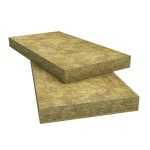Scorching or intolerable heat is harmful to the skin; it leads to many skin-related issues like reactions, burning of the skin, tanning or allergic irritation. Just like you’d protect your skin from heart while you’re in the open, you need to do the same when you’re indoors. The best way to do so is by using heat resistant paints. Not just your skin but walls exposed to high temperature leads to fading of paint, textures and aren’t flame-resistant. If your walls come in direct contact with sunlight, it can degrade the texture and make it look dull and stained which you won’t like.
To avoid this problem, you should use heat-resistant paints that can withstand heat and sunlight and do not deteriorate due to bad weather conditions. The coatings resist high temperature and also prevent corrosion that keeps the wall quality intact and bears temperatures up to 700-degree Celsius. If you undergo this then there are different types of heat-resistant paints that can solve your problem. These are as follows
Multi polymeric paints (Silicone-based)
The multi polymeric paint is designed using two components; water or solvent. The primary function of this paint is to resist extreme heat when applied at a new construction site, on-site, residential, or commercial buildings. This is because of the silicone which has high-temperature coatings and provides higher resistance against severe temperature conditions.
Powered form of paint
This type of high temperature resistant paint is based on epoxy and silicone. This also allows you to indulge different color schemes and intriguing finishes into the wall. This paint is versatile because it looks good, resists heat, and complements the overall theme of the room. Modern researchers say that powders made from silicone perform better at higher temperatures. However, the powder-based form of high resistant paints is free from Volatile organic compounds (VOC).
Thermal spray or metal additive coatings
These coatings generally fulfill two purposes; heat resistance and corrosion protection. These paints shield around the surface and defend against extreme heat which prevents the surface from corrosion that retains the texture and prevents the elements from fading away with time. Thermal spray is specifically used for corrosion under insulation (CUI) prevention in onshore and off-shore platforms of processing plants. On the other hand, metal additive coatings are used as heat resistors for temperatures above 400 degrees Celsius.
High-temperature powder paint
This is also a high-temperature resistant paintthat is usually based on epoxy or silicone which perform better at higher heat. These powders have a wide range of gloss and color finishes are free from VOC.
Heat-resistant ceramic paint
Ceramic coating provides heat-resistance, prevention against corrosion and chemicals, and a hard finish. The places with high-temperature machinery and equipment generally have this form of paint. In fact, a lot of machinery parts are composed of ceramic brands and mixtures with other heat-resistant materials. These paints also protect the metals used in the industry.
These are some of the heat-resistant paints you can buy for your house or office. It will retain the texture and appearance of your walls. Before you do that there are some important factors to consider which are as follows.
Temperature range
The operating range is the first and the most important element to look for- be it for residential or commercial purposes. Understand the normal working temperature and any fluctuations can let you decide which coatings to add to your environment. Each product has a predetermined temperature range offered by the paint.
Color stability
Heat resistance is good but not enough. So, choose a color-stable to that temperature that ensures that the painted equipment holds the color you selected. Selecting a color-stable high temperature for commercial purposes will be beneficial.
Application characteristics
Application characteristics are also an important thing to consider. The coatings require relatively thin film that keeps it flexible at high temperatures without cracking. Thins films are a little hard to achieve especially in maintenance painting situations. Thicker films that range between 2-16 mills are highly preferable.
These are some of the important characteristics and considerations to keep in mind before investing in heat-resistant paints. So, once you find all these characteristics matching in a paint, then you have chosen the right one.




















